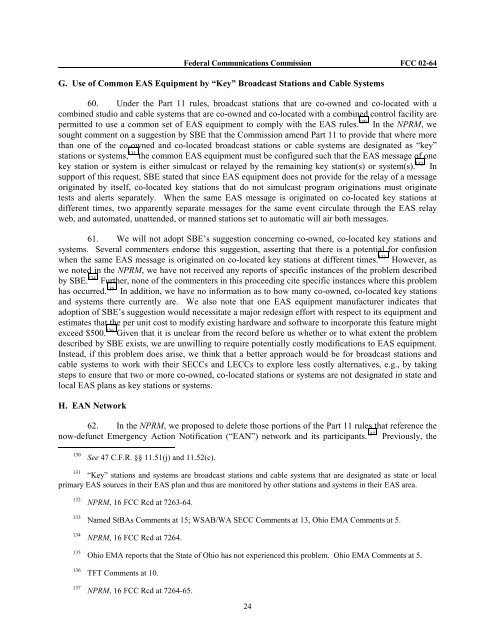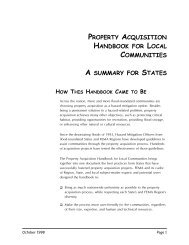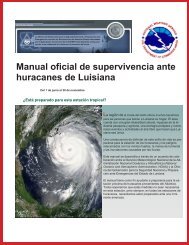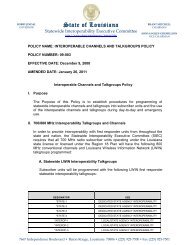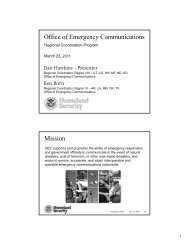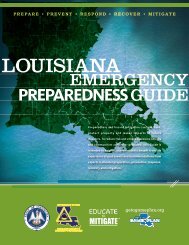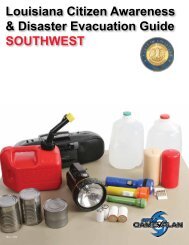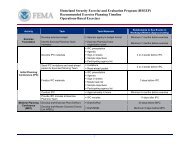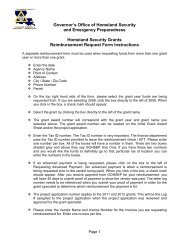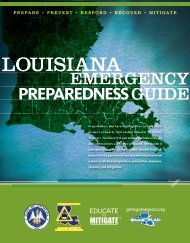Before the Federal Communications Commission Washington, D.C. ...
Before the Federal Communications Commission Washington, D.C. ...
Before the Federal Communications Commission Washington, D.C. ...
- No tags were found...
Create successful ePaper yourself
Turn your PDF publications into a flip-book with our unique Google optimized e-Paper software.
<strong>Federal</strong> <strong>Communications</strong> <strong>Commission</strong> FCC 02-64G. Use of Common EAS Equipment by “Key” Broadcast Stations and Cable Systems60. Under <strong>the</strong> Part 11 rules, broadcast stations that are co-owned and co-located with acombined studio and cable systems that are co-owned and co-located with a combined control facility arepermitted to use a common set of EAS equipment to comply with <strong>the</strong> EAS rules. 130 In <strong>the</strong> NPRM, wesought comment on a suggestion by SBE that <strong>the</strong> <strong>Commission</strong> amend Part 11 to provide that where morethan one of <strong>the</strong> co-owned and co-located broadcast stations or cable systems are designated as “key”stations or systems, 131 <strong>the</strong> common EAS equipment must be configured such that <strong>the</strong> EAS message of onekey station or system is ei<strong>the</strong>r simulcast or relayed by <strong>the</strong> remaining key station(s) or system(s). 132 Insupport of this request, SBE stated that since EAS equipment does not provide for <strong>the</strong> relay of a messageoriginated by itself, co-located key stations that do not simulcast program originations must originatetests and alerts separately. When <strong>the</strong> same EAS message is originated on co-located key stations atdifferent times, two apparently separate messages for <strong>the</strong> same event circulate through <strong>the</strong> EAS relayweb, and automated, unattended, or manned stations set to automatic will air both messages.61. We will not adopt SBE’s suggestion concerning co-owned, co-located key stations andsystems. Several commenters endorse this suggestion, asserting that <strong>the</strong>re is a potential for confusionwhen <strong>the</strong> same EAS message is originated on co-located key stations at different times. 133 However, aswe noted in <strong>the</strong> NPRM, we have not received any reports of specific instances of <strong>the</strong> problem describedby SBE. 134 Fur<strong>the</strong>r, none of <strong>the</strong> commenters in this proceeding cite specific instances where this problemhas occurred. 135 In addition, we have no information as to how many co-owned, co-located key stationsand systems <strong>the</strong>re currently are. We also note that one EAS equipment manufacturer indicates thatadoption of SBE’s suggestion would necessitate a major redesign effort with respect to its equipment andestimates that <strong>the</strong> per unit cost to modify existing hardware and software to incorporate this feature mightexceed $500. 136 Given that it is unclear from <strong>the</strong> record before us whe<strong>the</strong>r or to what extent <strong>the</strong> problemdescribed by SBE exists, we are unwilling to require potentially costly modifications to EAS equipment.Instead, if this problem does arise, we think that a better approach would be for broadcast stations andcable systems to work with <strong>the</strong>ir SECCs and LECCs to explore less costly alternatives, e.g., by takingsteps to ensure that two or more co-owned, co-located stations or systems are not designated in state andlocal EAS plans as key stations or systems.H. EAN Network62. In <strong>the</strong> NPRM, we proposed to delete those portions of <strong>the</strong> Part 11 rules that reference <strong>the</strong>now-defunct Emergency Action Notification (“EAN”) network and its participants. 137 Previously, <strong>the</strong>130See 47 C.F.R. §§ 11.51(j) and 11.52(c).131“Key” stations and systems are broadcast stations and cable systems that are designated as state or localprimary EAS sources in <strong>the</strong>ir EAS plan and thus are monitored by o<strong>the</strong>r stations and systems in <strong>the</strong>ir EAS area.132133134135136137NPRM, 16 FCC Rcd at 7263-64.Named StBAs Comments at 15; WSAB/WA SECC Comments at 13, Ohio EMA Comments at 5.NPRM, 16 FCC Rcd at 7264.Ohio EMA reports that <strong>the</strong> State of Ohio has not experienced this problem. Ohio EMA Comments at 5.TFT Comments at 10.NPRM, 16 FCC Rcd at 7264-65.24


